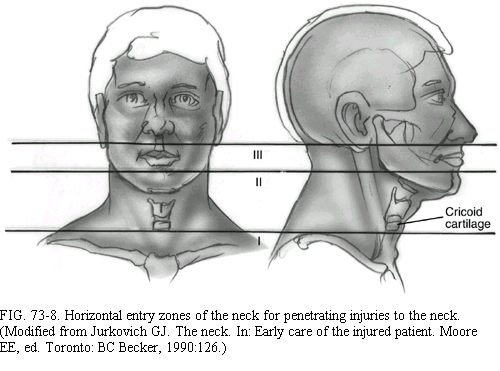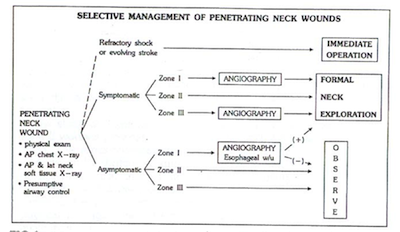Penetrating
neck injury: Trauma involving a missile or sharp object
penetrating the skin and violating the platysma layer of the neck.
Management has changed significantly over the years The management now focuses on the zones of the neck (see above) and the stability of the patient.
Management has changed significantly over the years The management now focuses on the zones of the neck (see above) and the stability of the patient.

HPI/Physical
Significant
injuries needing OR:
• Air bubbling through the wound• Active pulsatile bleeding
• Expanding Hematoma
• Neurologic deficit
• Hypotension/Unstable vitals
Signs
of airway injury:
• Subcutaneous air• Air bubbling through the wound
• Stridor or respiratory distress
Signs
of vascular injury:
• Expanding Hematoma• Active pulsatile bleeding
• Bruit/thrill
• Pulse deficit
